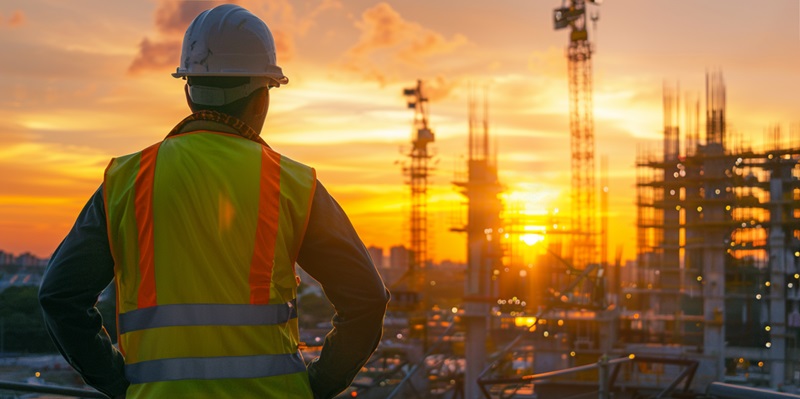Falls from elevation are one of the leading causes of injury and death in the construction industry, making it crucial for employers to take proactive measures to prevent such accidents. Employers are legally required to ensure their workers are protected from these hazards, but beyond compliance, safeguarding workers also means fostering a safer, more productive working environment. In 2022 alone, falls from elevation, slips, or trips were responsible for 423 out of 1,056 construction worker fatalities according to the Bureau of Labor Statistics. These grim statistics underline the importance of implementing safety measures through proper planning, provision of necessary equipment, and comprehensive training. This article outlines specific steps employers can take to mitigate this prevalent danger effectively.
1. Planning
Effective fall prevention begins long before the actual work at the construction site commences. Comprehensive planning is key to ensuring that all safety measures are in place. Firstly, employers must decide how the task will be executed and what activities will be included. This includes understanding each phase of the project and identifying areas where workers will be exposed to fall hazards. By doing so, employers can develop a safety plan that addresses all potential risks upfront.
Determining the necessary safety equipment required for each specific task is the next critical step in planning. Employers should identify what kind of fall protection equipment will be necessary, such as guardrails, safety nets, or personal fall arrest systems. It’s essential to assess the full range of activities and corresponding safety measures to ensure comprehensive coverage of all potential fall risks.
Budgeting for all essential and appropriate safety gear when estimating job costs is also vital. Safety equipment must be of high quality and standard, and this can be a significant expense. However, compromising on quality can lead to ineffective protection and increased risk of accidents.
Furthermore, planning to have all required tools and equipment available at the construction site is crucial. This means coordinating logistics to ensure that safety gear arrives on time and there are no delays in the project due to a lack of critical equipment. Finally, selecting fall protection that is appropriate for the work being performed requires employers to consider the specific requirements of the job and the suitability of the equipment for different environments and tasks.
2. Provision of Equipment
After thorough planning, the next step is the provision of the correct and effective fall protection equipment. Employers must supply fall protection and the correct equipment for the task at hand. This includes providing suitable types of ladders, scaffolds, and safety apparatus tailored to the specific requirements of the job. The right equipment ensures that workers have the necessary tools to perform their tasks safely.
For workers using personal fall arrest systems, it is imperative to supply harnesses that fit properly and are matched with suitable anchor points. Employers should ensure these systems are tested and fit correctly to avoid malfunction or improper use, which can lead to accidents.
Another critical aspect is the regular inspection of these systems to ensure they are in good working condition. Equipment should be checked for wear and tear, and any damaged or defective items should be replaced immediately. Regular inspections help in early detection of potential issues, thereby preventing accidents before they occur.
Providing the right kinds of ladders and scaffolds means ensuring that they are suitable for the specific tasks and can safely support the workers and materials. It’s also essential to provide safety gear such as helmets, gloves, and protective footwear. Ensuring workers are equipped with comprehensive protective gear significantly reduces the risk of injury.
3. Training
Training is essential for preventing falls in the construction industry. Educating workers on the proper setup and use of equipment ensures they know how to use fall protection systems effectively. Workers need to be trained on how to wear and secure harnesses, and how to use ladders and scaffolds correctly. It’s equally important to train workers to recognize dangers related to their jobs. They should be able to spot potential fall hazards in their work environment and understand the right steps to reduce these risks. Regular training should be conducted to keep workers updated with the latest safety protocols and industry standards.
Training on ladder safety is another crucial element. Workers should maintain three points of contact when using ladders, place ladders on level surfaces to prevent tipping, and secure ladders properly to avoid movement. They should also be trained to avoid overreaching, which can cause a loss of balance and result in falls. Employers must prioritize continuous education and training to foster a safety culture in the workplace. This not only complies with legal requirements but also protects the company’s most valuable asset—their workers. Continuous training and safety refreshers keep employees vigilant and prepared to handle potential hazards effectively.
In summary, preventing falls in the construction industry involves a multifaceted approach that includes meticulous planning, providing the right safety equipment, and ongoing training. By following these steps, employers can create a safer work environment, protecting their workforce and enhancing overall productivity and project efficiency.

